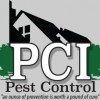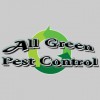For his entire life, insects have intrigued Luke Clark; he's always been fascinated by how they function and adapt, which is why he entered the pest control industry more than 15 years ago, in 2001. Luke is passionate about solving clients' problems with rats, spiders, termites and other pests, in addition to researching and learning about the most environmentally friendly way to approach pest control.
One of the rare pest companies that does not charge for an estimate, Clark's does complete work the right time, the first time.
One of the rare pest companies that does not charge for an estimate, Clark's does complete work the right time, the first time.
Services
Here at Clark's Advanced Pest Control, we make sure you're well-informed from the outset so you know exactly what measures we're taking to keep your home safe from unwanted rodents, bugs and other pests. Whether you need to prevent rodent entry or a treatment to control spiders, we are here to help in the most environmentally friendly way possible!
Our basic, or Single Pest Control, covers one pest, whether that be carpenter ants, rodents, spiders - whatever else your concern may be. The single pest program starts with initial treatment cost followed by two monthly treatments to gain control of pests. Then we'll transition to quarterly on a service-to-service basis.
Fleas are 1-3 mm in size and a shiny, reddish brown in color. Although they're most often associated with cats and dogs, they can also live and feed on the blood of humans, birds and reptiles. Fleas don't have wings, but they are able to jump long distances (nearly 4 feet), making it easy for them to move from one host to the next.
Carpenter ants are very common in the Pacific Northwest; they nest in wooden substances, burrowing into trees and logs in nature or furniture, walls and doors in your home. Carpenter ants are often mistaken for termites because they also have wings and can damage the wood in your home, but unlike termites they don't actually eat the wood; they just burrow into it as a nest.
Just like their name implies, moisture ants are attracted to damp areas; this is where they build their nests. With this in mind, it is not surprising that these types of ants are very common in the Pacific Northwest. Moisture ants look for wet, rotting wood to build their nests. They often find cracks in a home's foundation or crawl space and look for decaying wood; if they're successful, they'll set up a nest.



